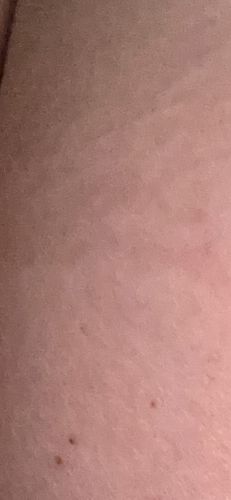Mole
Scientific Name: Nevus
Order & Family: Not applicable (Biological, not entomological classification)
Size: Typically 1-10 mm in diameter, but can vary

Natural Habitat
Human skin
Diet & Feeding
Not applicable (Non-living skin growth)
Behavior Patterns
Moles are benign growths on the skin that can appear at birth or develop during childhood and adolescence. They can change in size, shape, or color over time, especially during hormonal fluctuations (e.g., puberty, pregnancy). Most moles are stable, but a small percentage can become cancerous.
Risks & Benefits
The main risk associated with moles is the potential for developing melanoma, a serious form of skin cancer. Regular self-examination and professional dermatological check-ups are important to monitor for changes (asymmetry, border irregularity, color variation, diameter greater than 6mm, evolving/changing). There are no known benefits of moles themselves, as they are simply a common skin characteristic.
Identified on: 9/4/2025